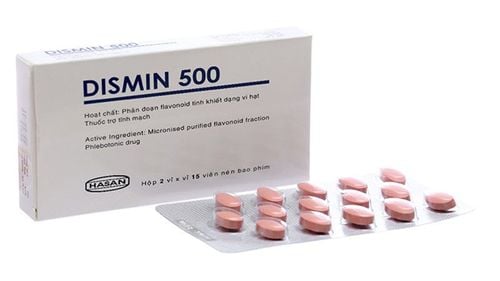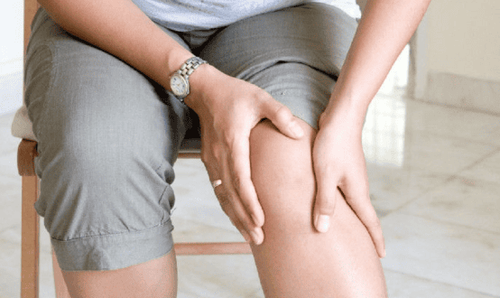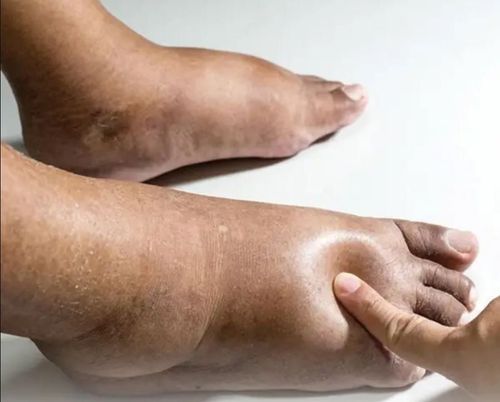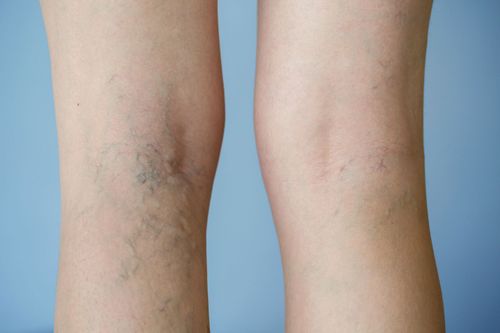This is an automatically translated article.
The article is professionally consulted by Master, Doctor Vu Thi Tuyet Mai - Cardiologist - Cardiovascular Center - Vinmec Central Park International General Hospital.Chronic venous insufficiency of the lower extremities is a common disease in about 10-35% of adults with slow progression, not tumultuous, causing many obstacles to daily activities and work, when the disease causes venous ulcers, it is very difficult. cured.
The disease is more common in women than in men with a ratio of 3:1, the diagnosis is not too complicated, but the most expensive and long-term treatment is when complications have occurred.
1. What is chronic varicose veins of the lower extremities?
This is a condition in which the lower extremity venous system function declines due to failure of the venous valves of the superficial or deep venous system which may be accompanied by venous thrombosis. At this time, the blood flow to the heart will decrease, causing stagnation in the veins of the legs. When veins are congested and dilated due to pathology, there will be anatomical abnormalities, characterized by dilation greater than 3mm, if found in small and superficial veins, it is easy to form spider veins. , Grid.2. Mechanism of varicose veins of the lower extremities
Normally the blood in the legs will be brought back to the heart thanks to the following 3 mechanisms:
The push in the legs when walking
The suction force created when breathing
The valve system in the veins helps prevent blood from entering the veins. So if 1 of the 3 above mechanisms is limited, the blood will not return to the heart, leading to blood stagnation in the veins of the feet, causing varicose veins of the lower extremities.
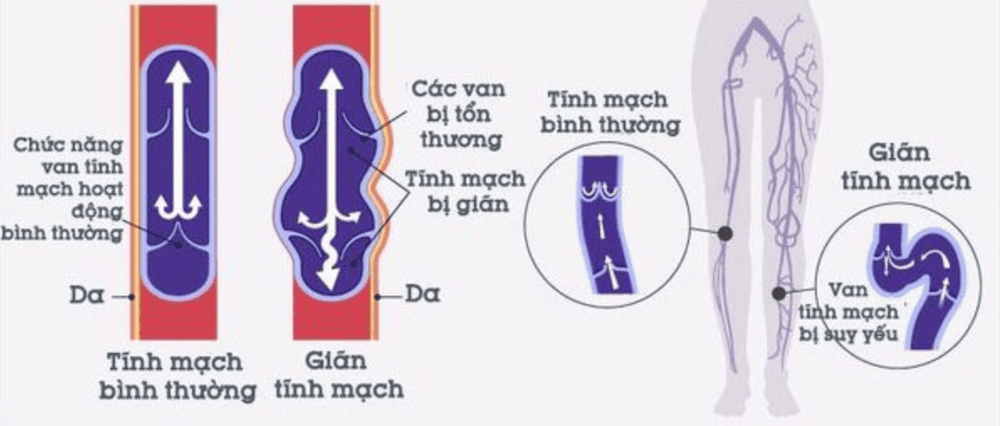
3. Causes of varicose veins in the lower extremities
Primary causes:Idiopathic varicose veins: caused by genetic or hemodynamic abnormalities of the superficial venous system
● Primary deep venous insufficiency: due to anatomical abnormalities such as the free margin of the venous system. Valves are too long, causing prolapse or dilation of the annulus
Secondary causes:
● Post-thrombotic syndrome
● Venous metaplasia: congenital deficiency or hypoplasia of the venous valves (superficial or deep), Venous metaplasia with or without arteriovenous fistula
● Due to compression such as tumor, Cockett syndrome
● Hemodynamic compression such as pregnancy, playing sports.
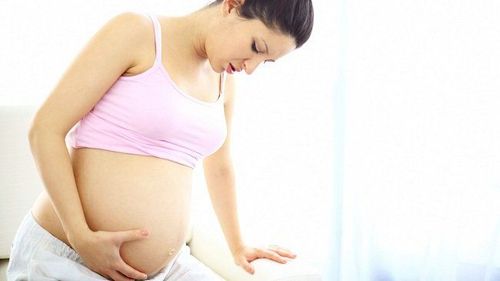
4. How to diagnose varicose veins of the lower extremities?
Diagnose varicose veins of the lower extremities through the patient's symptoms as follows:
In the early stages:
● Symptoms are faint, the patient often has leg pain, heaviness or sometimes just a cold feeling. feel like wearing shoes that are tighter than usual
● Don't sit too much, it can cause leg fatigue or slight swelling
Cramps at night
● Paresthesias like feeling of needles, ants crawling in the lower leg at night
● Blood vessels The smallest is in the raised ankle and foot area.
Advanced stage:
● Patients with edema of the legs, ankles or feet
Skin color changes in the lower legs due to blood stasis in the veins for a long time causing dystrophy
Swollen, floating veins clearly causes a feeling of heaviness, pain, which does not go away with rest
● Bleeding patches on the skin.
Complications stage:
Thrombophlebitis causing deep vein thrombosis, pulmonary embolism, can be life-threatening
Varicose veins causing heavy bleeding
Bacterial infection of the ulcers of insufficiency chronic veins.
Subclinical:
Doppler ultrasound: see regurgitation, thrombus
Contrast-enhanced intravenous angiography is only performed when the existence and characteristics of the regurgitation flows cannot be accurately determined. retrograde in the venous system.
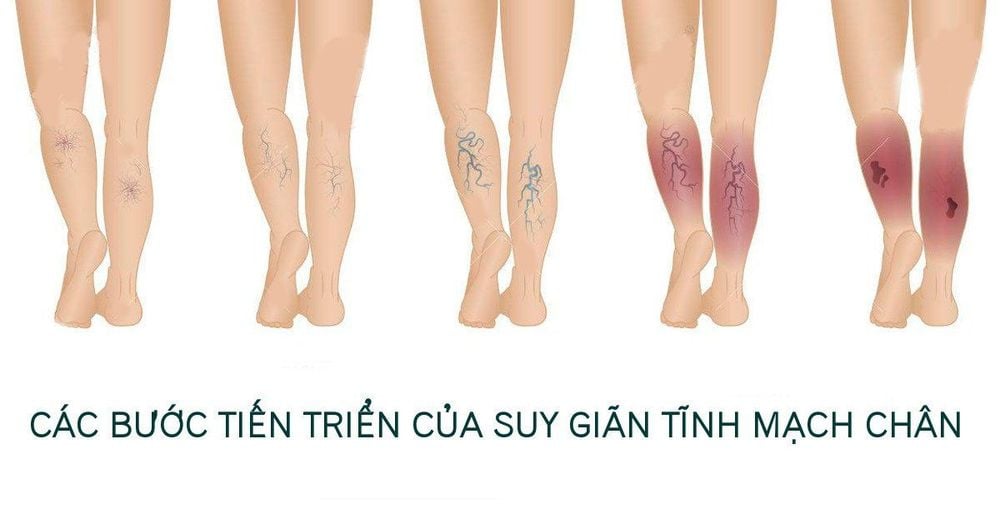
5. Classification of patients with varicose veins of the lower extremities according to CEAP
Grade 0: no visible or palpable middle vein
Grade 1: Dilated capillaries or dilated reticulum, size <3mm.
2 : Varicose veins large, saphenous small, size > 3mm.
3 : Edema but no change in the skin.
Grade 4: Skin dystrophy.
5 Grade: Skin dystrophy and healed ulcer scars.
6: Skin dystrophy and progressive ulceration.
6. How to treat chronic lower extremity varicose veins?
Medical treatment:
● Prevent reflux and make the forces acting on the flow of veins better such as: keeping your legs high when resting, doing strong muscle exercises, avoiding standing or sitting for too long, wearing socks elastic bandages or wrap legs with elastic bandages, pressure socks, avoid malformations, obesity and maintain a high-fiber diet to avoid constipation
● Use vascular stabilizers such as daflon, rutin C but only The effect in the early stages of varicose veins is mainly.
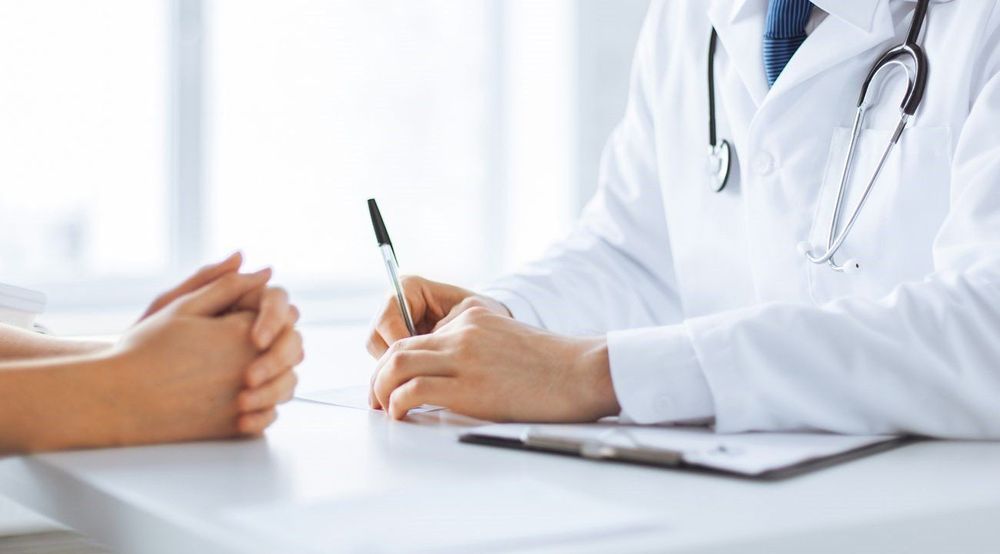
Cryotherapy with liquid nitrogen of minus 90 degrees to suffocate the venous lumen through a catheter in the venous lumen. However, this method has a recurrence rate of up to 30%
Radiofrequency occlusion: is a method of tissue destruction with heat caused by the friction of ions in the tissue for the purpose of eliminating refluxed blood flow. In the great saphenous vein is usually applied to patients with varicose veins grade 2 and above according to CEAP classification, medical treatment does not improve.
Surgical treatment:
Stripping surgery, Chivas surgery: are methods to remove dilated superficial veins with specialized tools. The Stripping technique will allow the veins to be withdrawn while the Chivas method will remove the dilated veins of the perforation system. This is the treatment with the lowest recurrence rate.
At Vinmec International General Hospital, there is a package of lower extremity varicose veins examination to help customers with symptoms of the disease receive an in-depth examination to determine the condition of the disease.
Please dial HOTLINE for more information or register for an appointment HERE. Download MyVinmec app to make appointments faster and to manage your bookings easily.





